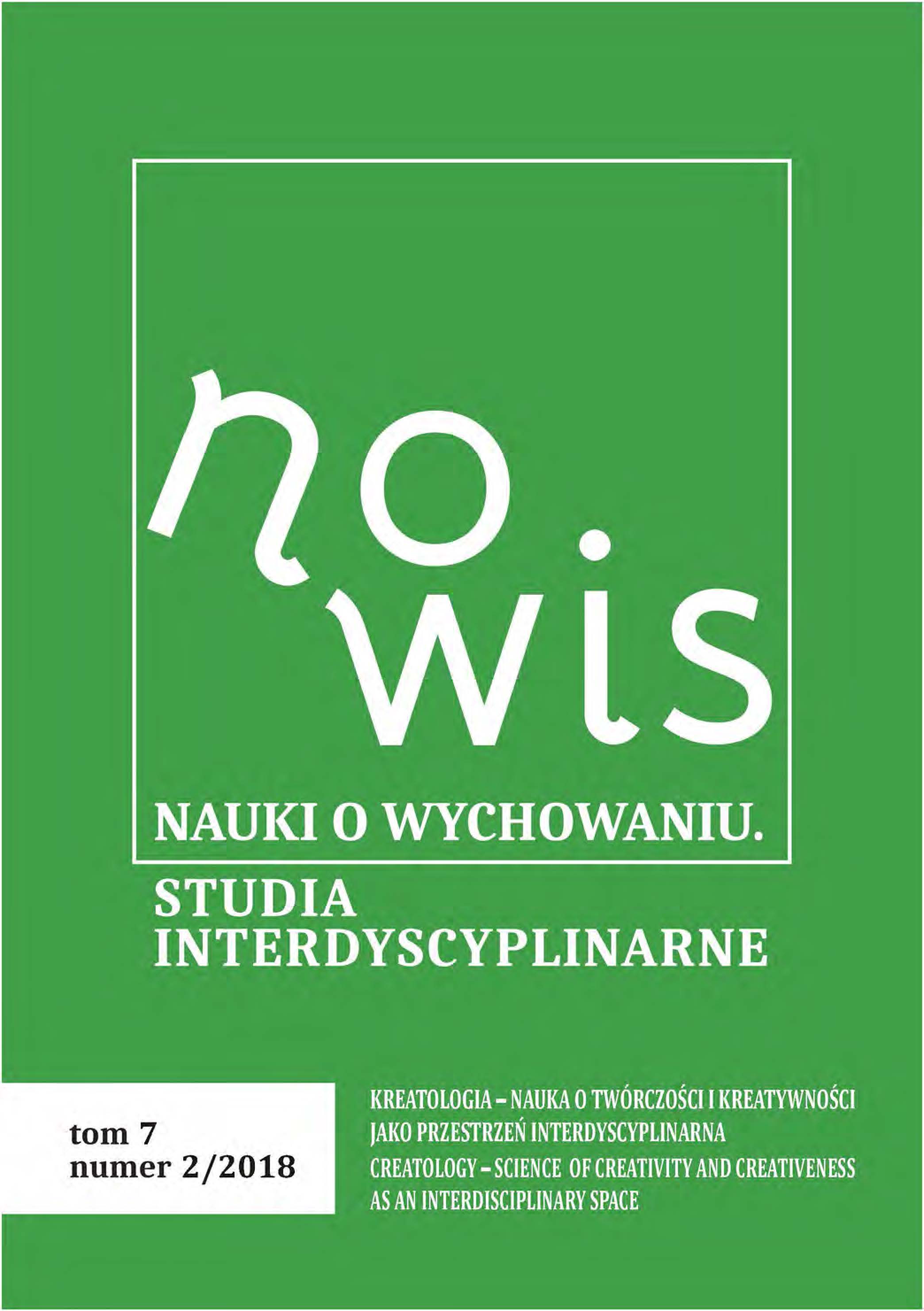Twórczy potencjał Internetu w zakresie upowszechniania kultury. Blogi o muzyce poważnej
DOI:
https://doi.org/10.18778/2450-4491.07.11Słowa kluczowe:
pedagogika twórczości, upowszechnianie sztuki, Internet, blogiAbstrakt
W niniejszym artykule Internet przedstawiony jest z punktu widzenia potencjału pobudzania kreatywności w zakresie upowszechniania sztuki. Z licznych przejawów upowszechniania sztuki w Internecie do analizy wybrano blogi na temat muzyki poważnej. Artykuł składa się z dwóch części: w pierwszej z nich autorka podejmuje próbę zdefiniowania twórczego potencjału Internetu w zakresie upowszechniania kultury przez pryzmat konkretnych czynników. Korzysta przy tym z istniejących teorii klimatu twórczego oraz środowiskowych stymulatorów i inhibitorów twórczości. W drugiej części artykułu wyróżnione czynniki znajdują zastosowanie w badaniu wybranych blogów o muzyce poważnej. Badania pozwalają zauważyć szereg różnic w stosunku do tradycyjnych form upowszechniania sztuki, a także prowadzą do wniosku, że blogi są formą tzw. twórczości codziennej, stymulowanej twórczym potencjałem Internetu.
Bibliografia
Barani K. (2009) Rola więzi online w życiu społecznym człowieka w: Psychologiczne konteksty Internetu, B. Szmigielska (red.), Kraków, Wydawnictwo WAM, s. 103–118.
Google Scholar
Bassa A. (2016) Blogi i portale literackie we Francji. Nowe formy rekomendacji i debaty o książkach w: Nie tylko salon. Wspólnotowe formy życia literackiego, E. Łukaszczyk, K. Wierzbicka-Trwoga (red.), Warszawa, Wydawnictwo DiG, s. 101–108.
Google Scholar
Galewska-Kustra M. (2007) Studium przypadku w: K. J. Szmidt, Pedagogika twórczości, Gdańsk, GWP, s. 360–369.
Google Scholar
Isaksen S. G., Lauer K., Ekvall G., Britz A. (2001), Perceptions of the best and worst climates for creativity: Preliminary validation evidence for the Situational Outlook Questionnaire, “Creativity Research Journal”, 2, s. 171–184.
Google Scholar
Keen A. (2007) Kult amatora. Jak Internet niszczy kulturę, Warszawa, Wydawnictwa Akademickie i Profesjonalne.
Google Scholar
Karkowski M., Pawłowska K. (2009) Klimat dla kreatywności w miejscu pracy, „Bezpieczeństwo Pracy – Nauka i Praktyka”, nr 2, s. 18–20.
Google Scholar
Karwowski M. (2003) Klimat dla kreatywności w: Dydaktyka twórczości. Koncepcje – problemy – rozwiązania, K. J. Szmidt (red.), Kraków, Oficyna Wydawnicza „Impuls”, s. 229–248.
Google Scholar
Karwowski M (2009) Klimat dla kreatywności: koncepcje, metody, badania, Warszawa, Centrum Doradztwa i Informacji Difin.
Google Scholar
Kozielecki (2008) Psychologia w wielkim świecie, Warszawa, Wydawnictwo Akademickie „Żak”.
Google Scholar
Modrzejewska-Świgulska M. (2007) Teorie twórczości codziennej w: K. J. Szmidt, Pedagogika twórczości, Gdańsk, Gdańskie Wydawnictwo Psychologiczne, s. 160–164.
Google Scholar
Nęcka E. (2016) Psychologia twórczości, Sopot, GWP.
Google Scholar
Po premierze napisano – Księżniczka czardasza (2018), „Opera Café”, nr 41, s. 8–9.
Google Scholar
Popek S. (2001) Człowiek jako jednostka twórcza, Lublin, Wydawnictwo Uniwersytetu Marii Curie-Skłodowskiej.
Google Scholar
Rogowska M. (2013) Koncepcja kreatywnego miasta w teorii i praktyce, „Prace Naukowe Uniwersytetu Ekonomicznego we Wrocławiu”, nr 320, s. 156–165.
Google Scholar
Sarowski Ł. (2017) Od Internetu Web 1.0 do Internetu Web 4.0 – ewolucja form przestrzeni komunikacyjnych w globalnej sieci, „Rozprawy Społeczne”, t. 11, s. 32–39.
Google Scholar
Schulz R. (1990) Twórczość. Społeczne aspekty zjawiska, Warszawa, PWN.
Google Scholar
Sołowiej J. (1997) Psychologia twórczości, Gdańsk, Wydawnictwo Uniwersytetu Gdańskiego.
Google Scholar
Szuman S. (1975) O sztuce i wychowaniu estetycznym, Warszawa, WSiP.
Google Scholar
Szmidt K. J. (2007) Pedagogika twórczości, Gdańsk, GWP.
Google Scholar
https://szwarcman.blog.polityka.pl/
Google Scholar
https://www.facebook.com/pg/blogerka.klasycznie.muzyczna/
Google Scholar
http://po-klawiszach.blogspot.com/
Google Scholar
https://placowkapostepu.wordpress.com/
Google Scholar
Blog Doroty Szwarcman „Co w duszy gra” nominowany do Gwarancji Kultury 2015!, artykuł na oficjalnej stronie internetowej tygodnika „Polityka”, 09.04.2015, https://www.polityka.pl/opolityce/1615305,1,blog-doroty-szwarcman-co-w-duszygra-nominowany-do-gwarancji-kultury-2015.read [dostęp: 24.03.2018].
Google Scholar
Film promocyjny Festiwal Opera Rara 2018 poleca Nadia Attavanti!, https://www.youtube.com/watch?v=lJcByLkqXJ4 [dostęp: 24.03.2018]
Google Scholar
Pobrania
Opublikowane
Jak cytować
Numer
Dział
Licencja

Utwór dostępny jest na licencji Creative Commons Uznanie autorstwa – Użycie niekomercyjne – Bez utworów zależnych 4.0 Międzynarodowe.





 Strona czasopisma, prowadzona przez Zespół redakcyjny NOWiS na platformie Index Copernicus:
Strona czasopisma, prowadzona przez Zespół redakcyjny NOWiS na platformie Index Copernicus: 





